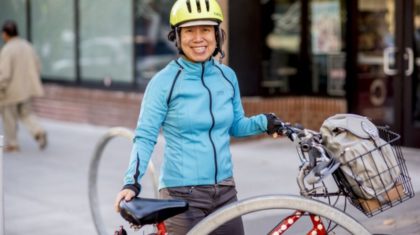
Blog 3 of 3 — Reflections on the People and the Culture
Between March and June 2018, my wife and I bicycled nearly 5,000 kilometers through six countries in Southeast Asia, including Vietnam, Laos, Cambodia, Thailand, Malaysia and Singapore. My first blog post focused on bike safety and my second focused on bicycle infrastructure. In my third and final blog post, I will discuss the people and the cultures that we encountered along the way. Similar to previous posts, I’ve organized this post by countries with similar transportation characteristics. In this case, I’ve grouped Laos and Vietnam together and Cambodia, Thailand and Malaysia together.

Vietnam and Laos
Both Vietnam and Laos have a long history of relying upon the bicycle for transportation, although the bicycle does not feature as prominently today as the countries have become more developed and motor scooters have largely replaced bicycles as the primary mode of transportation. It is still quite common to see people bicycling around in these countries, but it seemed to be mostly children (many riding two or three to a bicycle) and older people. We also saw merchants using their bicycles to transport their wares to the market and to sell along the streets. This rich tradition of bicycling was a key factor to our feeling so welcome and comfortable riding through these unfamiliar areas.


The children that we encountered in Vietnam and Laos were so friendly and curious about a couple of Westerners riding their bikes by their house or through their village. We suspected that many of the smaller villages hadn’t had many international visitors come through, which could’ve explained their excitement. They came running out to the street yelling “Hallo” in Vietnam and “Sabaidee” in Laos. We lamented that we could not speak the local language in order to have a more meaningful conversation with the friendly locals.
In the rural areas of Vietnam and Laos, the people live a subsistence lifestyle. We observed the ethnic minorities of Northern Vietnam and Laos carrying wood, building their homes, and farming without the assistance of machinery, although they often use water buffalo to help with the plowing. While there is no question that this can be a difficult and physically demanding life, there is a beautiful simplicity to life here, absent of all the devices that rule the Western world, i.e. smartphones and video games.
Both Hanoi and Hội An ban vehicles from central parts of the city during certain times of day and on certain days of the week to create walking and cycling-only zones. In Hanoi, the road around Hoàn Kiếm Lake is closed to vehicles every weekend from Friday night until Monday morning to provide a space for walking, biking and other activities. The people embrace it like I’ve never seen with dancing, aerobics, tai chi, badminton and plenty of walking and cycling. In Hội An, the central historic core of the city is closed to vehicles and motor scooters, which creates a great environment for walking and cycling through this UNESCO heritage site (see photo below).


Cambodia, Thailand and Malaysia
Our experience riding in Cambodia, Thailand and Malaysia was quite different from Laos and Vietnam as there was much less utilitarian cycling in these countries and there seemed to be less of a buzz compared to riding through Vietnam. We rode along the coast in rural Cambodia, and the roads were lightly traveled except around the tourist city of Sihanoukville. All in all, there was a nice, laid-back vibe to Cambodia, which was in stark contrast to the industrious, always-on-the-go Vietnam way of life.
In Thailand and Malaysia, the roads were much more auto-oriented, but we still saw other cyclists — they tended to be recreational, sports cyclists as opposed to the more utilitarian cyclists that we saw in Laos and Vietnam. The people we encountered in both Thailand and Malaysia were friendly, but not in the same outgoing, run-out-to-the-road kind of way. Thailand is often ranked as one of the happiest countries in the world and we did perceive that the people seemed very content and at peace with the world. Thailand was definitely the easiest country in all of SE Asia to bicycle tour when considering factors such as road quality, services, and amount of English spoken. In Malaysia, almost everyone we met spoke English and it was certainly the most developed country that we rode through, until we got to Singapore. While our day-to-day lives were easier in both Thailand and Malaysia, I couldn’t help but feel as though our most unforgettable experience was riding through Laos and Vietnam.


Since our trip has ended, many people have asked me if I would do another trip like this again. Without hesitation, I always say “YES — sign me up!” Bicycle touring through SE Asia was not always relaxing and certainly had its fair share of challenges (e.g., my wife spent nearly a week in a Thai hospital recovering from severe dehydration and a viral infection!), but it’s also such an amazing way to explore a new place and connect with its people. Traveling by bicycle affords the perfect pace whereby you can travel decent distances, be able to get off the beaten path easily and have more authentic, local experiences. Plus, it keeps you fit, allows you to eat as much of the local cuisine as you want, and gives you some great stories to tell when it’s all over!
Thanks for reading. If you enjoyed this article, feel free to hit that clap button ? to help others find it.
Say Hi on Twitter or check out another recent blog featuring Sam’s active transportation experiences in SE Asia.
Or subscribe to our AltaGO Newsletter here!


